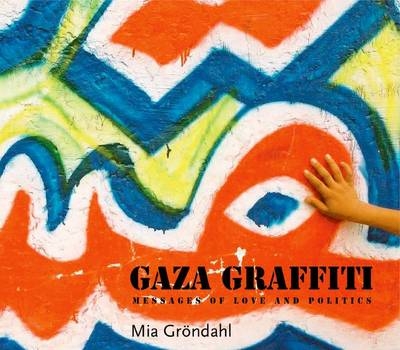
Gaza Graffiti
Messages of Love and Politics
Seiten
2010
The American University in Cairo Press (Verlag)
978-977-416-321-0 (ISBN)
The American University in Cairo Press (Verlag)
978-977-416-321-0 (ISBN)
- Titel z.Zt. nicht lieferbar
- Versandkostenfrei
- Auch auf Rechnung
- Artikel merken
Graffiti began in Gaza in 1987, during the first Intifada, when there was no Palestinian television or radio in the Gaza Strip, and no newspapers: the messages that spread along the walls became an important means of communication. This title presents a photographic exploration of Gaza's writing on the wall.
Graffiti began in Gaza in 1987, during the first Intifada, when there was no Palestinian television or radio in the Gaza Strip, and no newspapers: the messages that spread along the walls became an important means of communication. Over the years, all political groups have had their own graffiti artists. Scrawl is not tolerated—it has to look good. Hamas even offers evening classes in graffiti.
Documenting the writings on the walls of Gaza over a period of seven years, celebrated Swedish photojournalist Mia Gröndahl lays before us the many roles that they perform, the colorful and surprising range of their artistic expression, and their reflection of the changing political situation. And apart from political slogans, the walls bear witness too to joy and sadness: the wedding celebrations, the many victims of the conflict, and the ever present hope of peace and freedom. For us on the outside, Mia Gröndahl’s photographs offer an exciting and unexpected view of life in Gaza.
Graffiti began in Gaza in 1987, during the first Intifada, when there was no Palestinian television or radio in the Gaza Strip, and no newspapers: the messages that spread along the walls became an important means of communication. Over the years, all political groups have had their own graffiti artists. Scrawl is not tolerated—it has to look good. Hamas even offers evening classes in graffiti.
Documenting the writings on the walls of Gaza over a period of seven years, celebrated Swedish photojournalist Mia Gröndahl lays before us the many roles that they perform, the colorful and surprising range of their artistic expression, and their reflection of the changing political situation. And apart from political slogans, the walls bear witness too to joy and sadness: the wedding celebrations, the many victims of the conflict, and the ever present hope of peace and freedom. For us on the outside, Mia Gröndahl’s photographs offer an exciting and unexpected view of life in Gaza.
Mia Gröndahl was born in 1951 and lives in Cairo and southern Sweden. She is the photographer of In Hope and Despair: Life in the Palestinian Refugee Camps (AUC Press, 2003)
| Erscheint lt. Verlag | 15.3.2010 |
|---|---|
| Zusatzinfo | 150 color illustrations |
| Verlagsort | Cairo |
| Sprache | englisch |
| Maße | 241 x 216 mm |
| Gewicht | 526 g |
| Themenwelt | Kunst / Musik / Theater ► Fotokunst |
| Kunst / Musik / Theater ► Kunstgeschichte / Kunststile | |
| Reisen ► Bildbände ► Naher Osten | |
| ISBN-10 | 977-416-321-4 / 9774163214 |
| ISBN-13 | 978-977-416-321-0 / 9789774163210 |
| Zustand | Neuware |
| Haben Sie eine Frage zum Produkt? |
Mehr entdecken
aus dem Bereich
aus dem Bereich
der Süden: Dofhar, Salalah und das Weihrauchland
Buch | Softcover (2023)
Hupe, I (Verlag)
CHF 31,90
Bildgeographien deutsch-jüdischer Fotografinnen nach 1933
Buch | Hardcover (2023)
Wallstein (Verlag)
CHF 65,80
50 Ziele, die Sie gesehen haben sollten
Buch | Hardcover (2020)
Bruckmann (Verlag)
CHF 42,90


